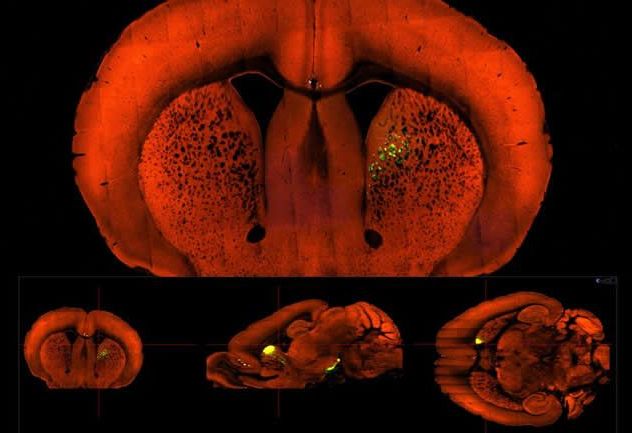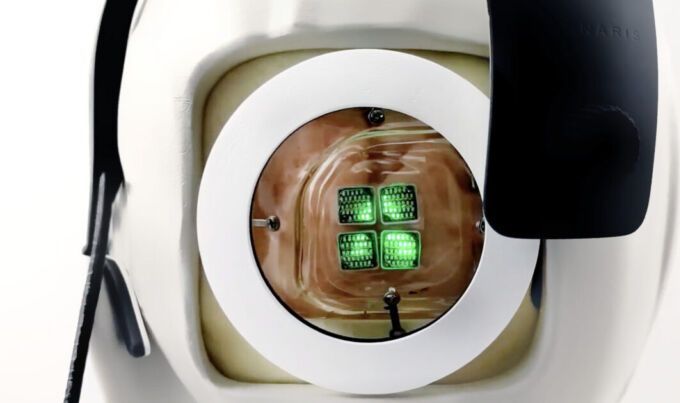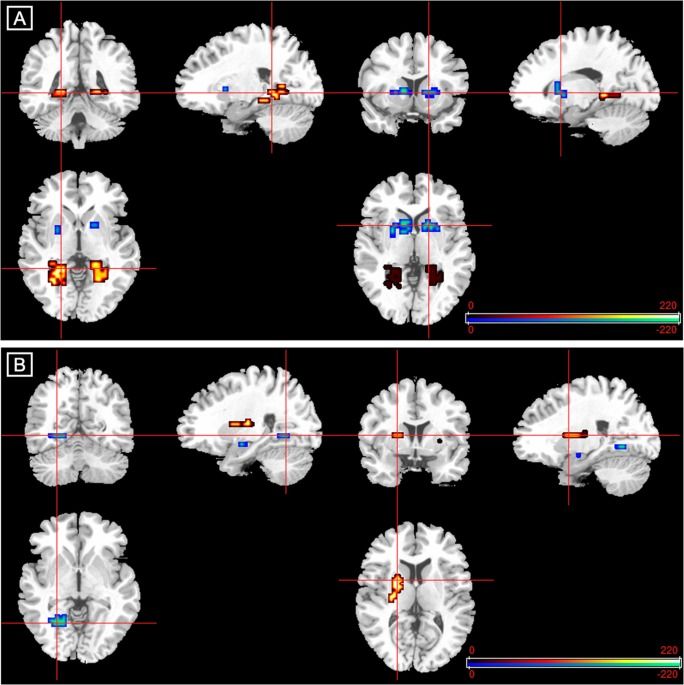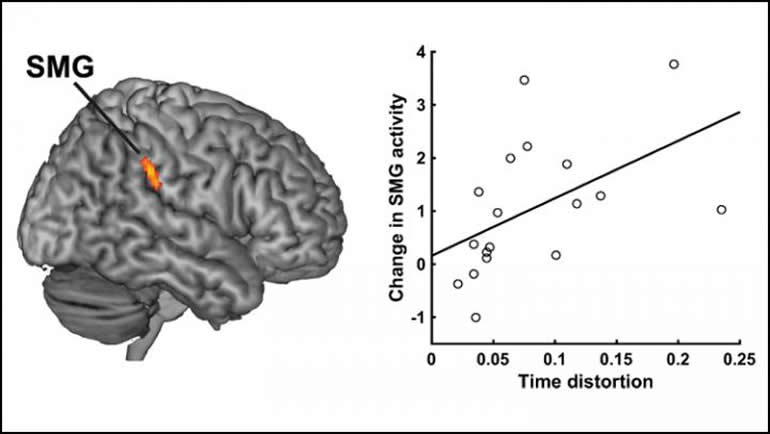Does the enormous computing power of neurons mean consciousness can be explained within a purely neurobiological framework, or is there scope for quantum computation in the brain?



A new study suggests anticholinergic medications may increase the risk of accelerated cognitive decline, especially in older adults at high risk of developing Alzheimer’s disease.
Anticholinergic drugs block the action of acetylcholine, a chemical messenger that controls a range of automatic bodily functions and plays a vital role in memory and attention.
Doctors prescribe these drugs for a variety of conditions, including urinary incontinence, overactive bladder, chronic obstructive pulmonary disorder (COPD), seasonal allergies, and depression.
Are you ready?
“if you were the type of geek, growing up, who enjoyed taking apart mechanical things and putting them back together again, who had your own corner of the garage or the basement filled with electronics and parts of electronics that you endlessly reconfigured, who learned to solder before you could ride a bike, your dream job would be at the Intelligent Systems Center of the Applied Physics Laboratory at Johns Hopkins University. Housed in an indistinct, cream-colored building in a part of Maryland where you can still keep a horse in your back yard, the ISC so elevates geekdom that the first thing you see past the receptionist’s desk is a paradise for the kind of person who isn’t just thrilled by gadgets, but who is compelled to understand how they work.”
Then there are the legal questions: Can the cops make you wear one? What if they have a warrant to connect your brain to a computer? How about a judge? Your commanding officer? How do you keep your Google Nest from sending light bulb ads to your brain every time you think the room is too dark?
A wearable device that can decode the voice in your head is a way’s off yet, said Jack Gallant, professor of psychology at University of California, Berkeley and a leading expert in cognitive neuroscience. But he also said, “Science marches on. There’s no fundamental physics reason that someday we’re not going to have a non-invasive brain-machine interface. It’s just a matter of time.
”And we have to manage that eventuality.”

Over the past five decades, space travel advocates have been pushing to expand our footprint in space. They dream about lunar bases, missions to Mars and colonies in free space. The visions are ever changing, with government efforts joined by those of private companies like Elon Musk’s SpaceX — in the midst of an effort to send tourists on a trip around the Moon — gravitating toward the space tourism sector. While the goals and how to accomplish them are in constant flux, there remain certain obstacles that must be overcome before we take that next big step. And one of the biggest is the need to protect the health of our future space explorers.
That’s what’s prompted NASA to turn to the fast-moving world of gene therapy to solve several potential medical issues facing astronauts on lengthy space missions.
The US space agency and the associated Translational Institute for Space Health Research (TRISH) at the Baylor College of Medicine are now calling for proposals from private companies and other groups to develop a kind of gene therapy for astronauts. But this would be different than recent gene therapies that target specific diseases such as hemophilia or various types of cancer. Instead, the idea here is to minimize the damage from space radiation through a kind of preventive treatment. Exposure to radiation in space can cause cancer, cardiovascular disease, cataracts and the loss of cognitive function due to accelerated death of brain cells. These different disease categories involve very different mechanisms — cancer and heart disease result from radiation damaging DNA, while loss of brain tissue results simply from radiation killing off mature cells, and still other diseases result from radiation destroying stem cells.

Summary: Researchers found specific neurons in the striosome that help mice learn to avoid negative experiences.
Source: Cold Spring Harbor Laboratory
Cold Spring Harbor Laboratory (CSHL) scientists have discovered neurons in the mouse brain that help an animal learn to avoid negative experiences. The cells reside in a part of the brain involved in regulating the motivations that influence behavior.

It’s essentially the guts of a smartphone combined with brain-implanted micro electrodes, as TechCrunch reports. The “Gennaris bionic vision system,” a project that’s more than ten years in the making, bypasses damaged optic nerves to allow signals to be transmitted from the retina to the vision center of the brain.
The system is made up of a custom-designed headgear, which includes a camera and a wireless transmitter. A processor unit takes care of data crunching, while a set of tiles implanted inside the brain deliver the signals.
“Our design creates a visual pattern from combinations of up to 172 spots of light (phosphenes) which provides information for the individual to navigate indoor and outdoor environments, and recognize the presence of people and objects around them,” Arthur Lowery, professor at Monash University’s Department of Electrical and Computer Systems Engineering, said in a statement.
In recent years we have seen the move away from ‘politics as usual’. Non-traditional figures have entered the political arena to disrupt the typical entrenched narratives. The election and worldwide popularity of Jacinda Ardern, New Zealand Prime Minister just one example of a new kind of leader who prioritises national wellbeing and happiness in the belief that everything else will follow.
Brigadier General (Retired) Dr. Loree Sutton Next Mayor of New York City?
Brigadier General Dr. Loree Sutton, ex-army general, physician, LGBTQ, mental healthcare advocate, is a further example of a leader who attempts to bridge the gap between people and focus on wellbeing. She is a candidate who is bringing a centrist, holistic, “quality-of-life” based approach to rejuvenating and re-inventing one of the world’s major financial, technological, and cultural capitals, New York City. https://loreeformayor.nyc @NYC Mayor’s Office.
From brigadier general to new york city mayor?
Ira Pastor ideaXme life sciences ambassador interviews General Dr. Loree Sutton a retired military officer who served as a Brigadier General in the United States Army for over 20 years (one of only 15 female generals out of the 1.3 million soldiers serving in the Army) as well as a medical psychiatrist (for a period of time the Army’s highest-ranking), who was deployed to various locations including Saudi Arabia, Iraq, Kuwait, ad Egypt in support of the first Gulf War and other missions, and is a current candidate in the 2021 New York City mayoral election.
Ira comments: Over Dr. Sutton’s career she has been awarded Legion of Merit (a military award of the United States Armed Forces that is given for exceptionally meritorious conduct in the performance of outstanding services and achievements), as well as the Bronze Star Medal, Defense Meritorious Service Medal, and Order of Military Medical Merit. Dr. Sutton is also the founding director of the Defense Centers of Excellence for Psychological Health and Traumatic Brain Injury, and served as a special assistant to the Assistant Secretary of Defense for Health Affairs.

Emotional dysregulation and anxiety are common in people at clinical high risk for psychosis (CHR) and are associated with altered neural responses to emotional stimuli in the striatum and medial temporal lobe. Using a randomised, double-blind, parallel-group design, 33 CHR patients were randomised to a single oral dose of CBD (600 mg) or placebo. Healthy controls (n = 19) were studied under identical conditions but did not receive any drug. Participants were scanned with functional magnetic resonance imaging (fMRI) during a fearful face-processing paradigm. Activation related to the CHR state and to the effects of CBD was examined using a region-of-interest approach. During fear processing, CHR participants receiving placebo (n = 15) showed greater activation than controls (n = 19) in the parahippocampal gyrus but less activation in the striatum. Within these regions, activation in the CHR group that received CBD (n = 15) was intermediate between that of the CHR placebo and control groups. These findings suggest that in CHR patients, CBD modulates brain function in regions implicated in psychosis risk and emotion processing. These findings are similar to those previously evident using a memory paradigm, suggesting that the effects of CBD on medial temporal and striatal function may be task independent.

What has been shaping the human mind throughout the history of mankind? What is the difference between mind and consciousness? What links quantum physics to consciousness? What gives rise to our subjective experience? What drives our accelerating evolution?
If you’re eager to familiarize with probably the most advanced ontological framework to date or if you’re already familiar with the Syntellect Hypothesis which, with this series, is now presented to you as the full-fledged Cybernetic Theory of Mind, you should get this book two of the series which corresponds to Part II of The Syntellect Hypothesis: Five Paradigms of the Mind’s Evolution. This volume two contains some newly-introduced and updated material if compared with the originally published version and can be read as a stand-alone book. At the same time, it is highly recommended to obtain The Syntellect Hypothesis as the original coherent version of the same theoretical framework instead of waiting for all five books to come out and if you don’t need extra detailing.
Over the course of human history, from the first bonfire to today’s smartphones and hyperloops, we have designed tools, and tools designed us back by shaping our minds. Technology isn’t just something outside ourselves, it’s an innate part of human nature, like sex, sleeping or eating, and it has been a major driving force in evolution. Tool using, along with language, bipedalism, and cooking (quite literally) is essentially what has made us human.